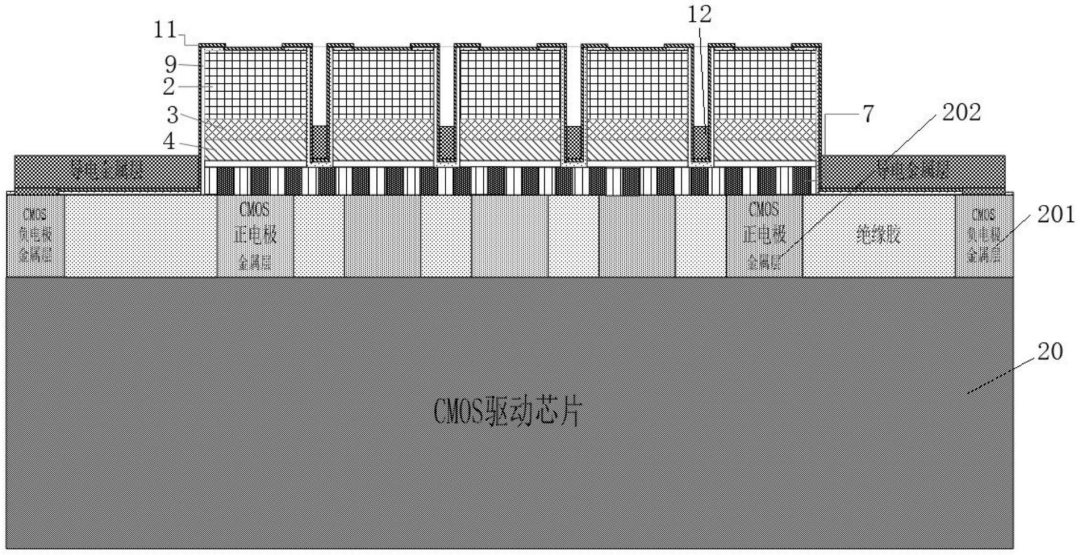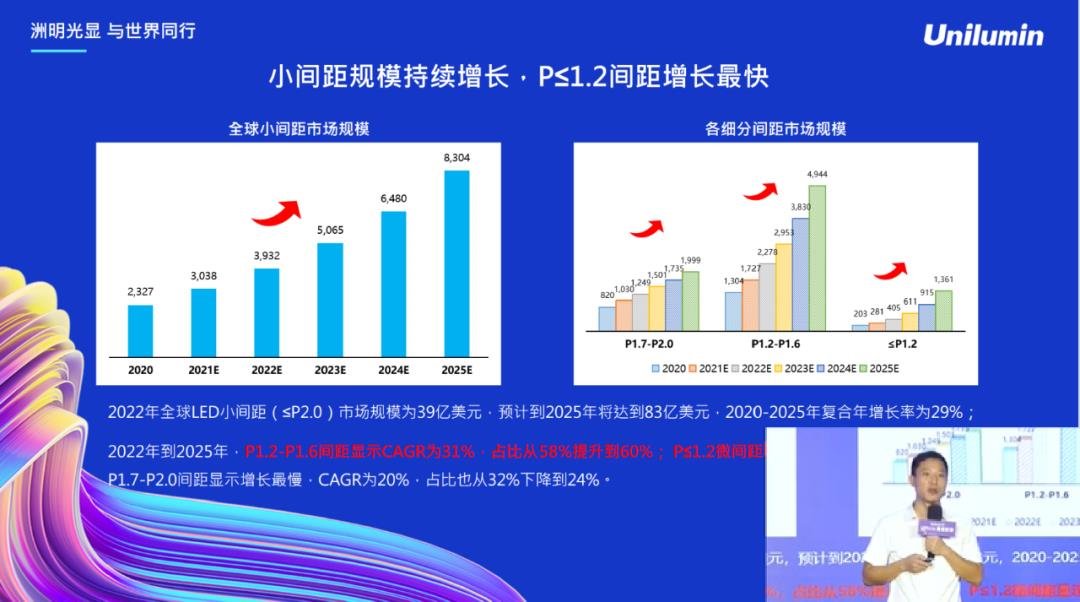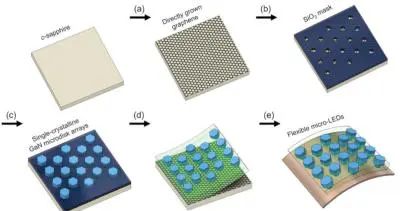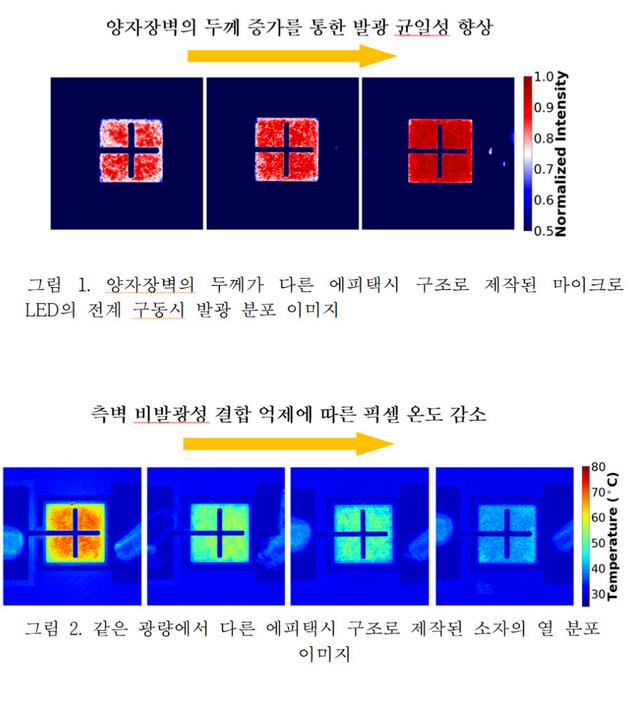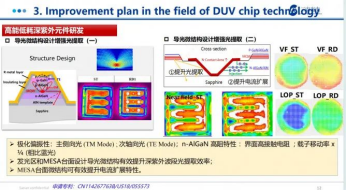Analysis of the evolution path of Samsung Display XR Display's MicroLED microdisplay technology
- author:
- 2024-06-04 14:44:56
Samsung monitors can be used in augmented reality (AR) device displays by LEDoS (LEDs on Silicon) technology is expected to evolve along the blue + QDs RGB3-panel Monolithic 1-panel approach.
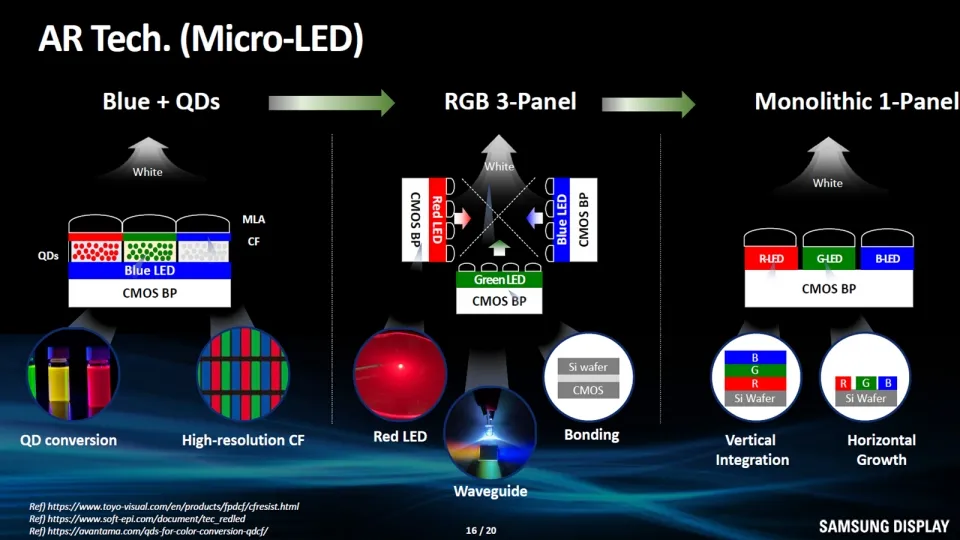
On May 23, Jongmoo Heo, executive director of Samsung Display, introduced representative LEDos technologies: blue + quantum dot (QD) method, RGB 3-panel, Monolithic 1-panel.
LEDOS refers to the technology of forming micro light emitting diodes (LEDs) in size of about a few microns ( m) on a silicon substrate. LEDos is expected to be used to display augmented reality (AR) devices among augmented reality (XR) devices. This is because LEDs, which have advantages in brightness, have advantages in LEDos, where information must be superimposed on the real world.
Blue +QD mode LEDos is a method of forming blue LEDs on a complementary metal oxide semiconductor (CMOS) substrate (backplane) and then realizing color through a QD color conversion layer. A microlens array (MLA) is placed on top of the QDs to improve light extraction efficiency. MLA can also be used for LEDos for RGB 3-panels and Monolithic 1-panels.
The RGB 3-panel method is a technology that creates three panels by forming R, G and B micro LEDs on three CMOS substrates. In this case, waveguide (optical waveguide) technology is required. Waveguide technology transmits images by controlling light and directing it in specific directions.
The Monolithic 1-panel method has a panel. R, G and B LEDs are stacked vertically on a CMOS substrate or horizontally side by side on the same layer.
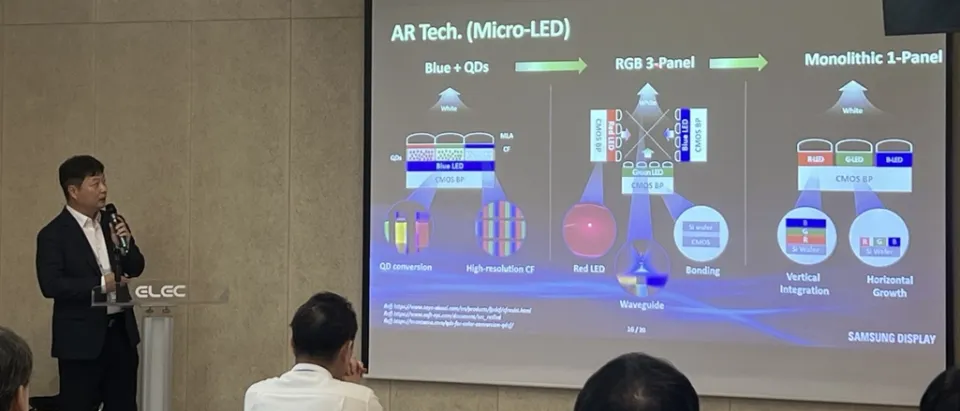
Heo Jong-moo, executive director of Samsung Display, introduced LEDos technology including blue + quantum dot (QD) method, RGB 3-panel, Monolithic 1-panel
Managing Director Heo Jong-moo said: Organic Light Emitting Diodes (OLEDs) can achieve RGB by deposition on glass or CMOS substrates, but LEDs require high-temperature epitaxial processes, so RGB LEDs must be manufactured. Heo's managing director said: Producing RGB LEDs in the three panel technology directions or patterning them separately is a difficult process, which will increase product costs. Of course, this is also a problem that must be overcome when developing high-resolution panels.
He said that XR display is not just an extension of previously used OLEDs, but a comprehensive technology that can create new value in optics, panels, processes and materials.
Heo's managing director pointed out that the reasons why virtual reality (VR) devices released so far have not yet gained a foothold in the market are as follows: lack of value such as content, inconvenient equipment, and high cost. So far, VR equipment itself is not as comfortable as wearing glasses to look at the screen in front of you, and the cost has exceeded the level that can be popularized.
Heo's managing director added: When all three elements of value, convenience and cost are in place, the XR market will grow significantly. Currently, this market is still in its infancy. Samsung Display launched Project M and developed a 1-inch micro display by the end of 2022. OLEDoS and LEDoS both deposit OLEDs on a silicon substrate and are representative micro-display technologies.
TAG:
Guess you want to see it
Popular information
-
99.88% yield! Seoul National University Micro LED Mass Transfer New Breakthrough
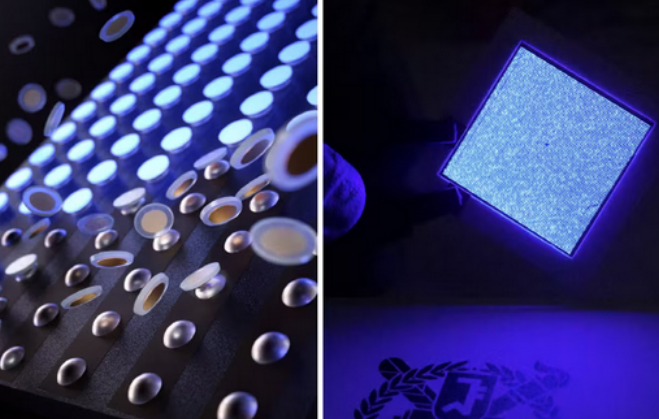
-
Micro LED new breakthrough! Jingneng Optoelectronics's first 12-inch silicon substrate InGa-based tr
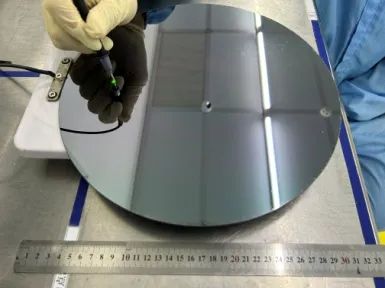
-
technology| Interpretation of MicroLED Technology in Mico Display Principles

-
Micro LED Innovation Breakthrough: The future of display technology has arrived
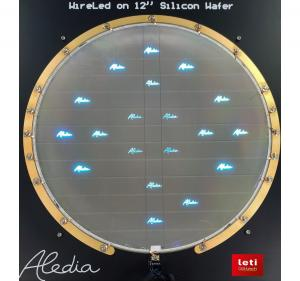
-
Micro LED achieves breakthrough results again
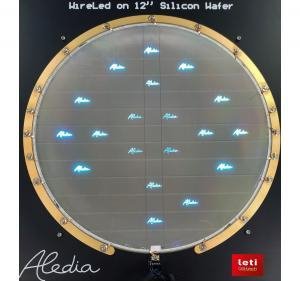
-
With more than 75000 grains per time, British researchers developed Micro LED continuous roller tran
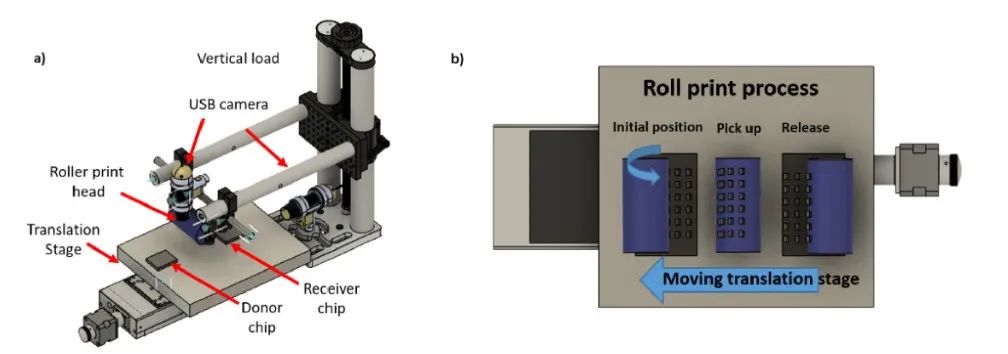
-
It can improve the light extraction rate of far-ultraviolet LEDs, and Silanna UV technology has beco
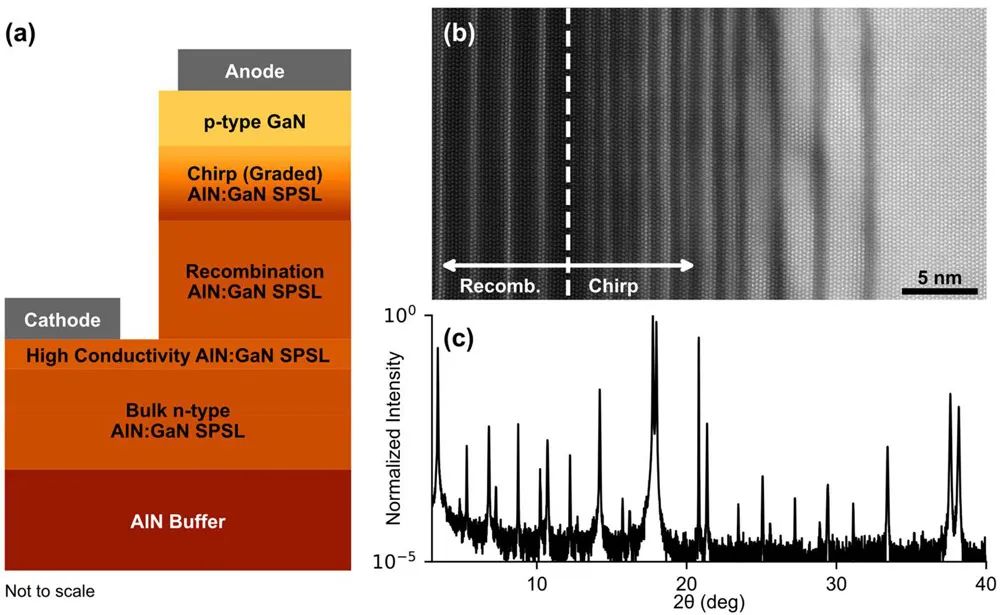
-
BOE and Peking University announced new patents involving AR displays and Micro LED chips
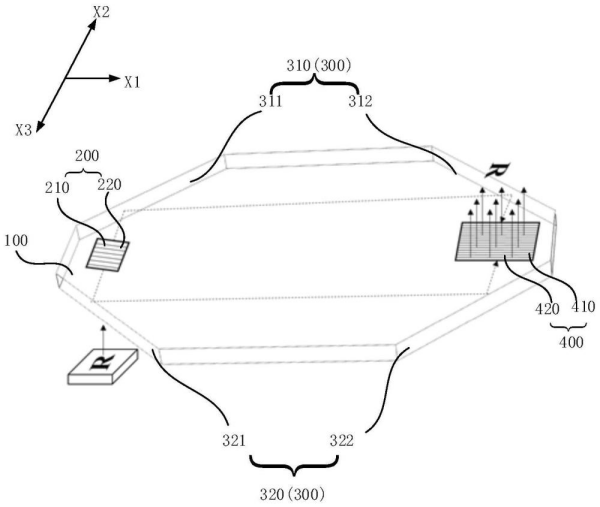
-
Stanford University develops flexible, stretchable IC and successfully drives Micro LED screens
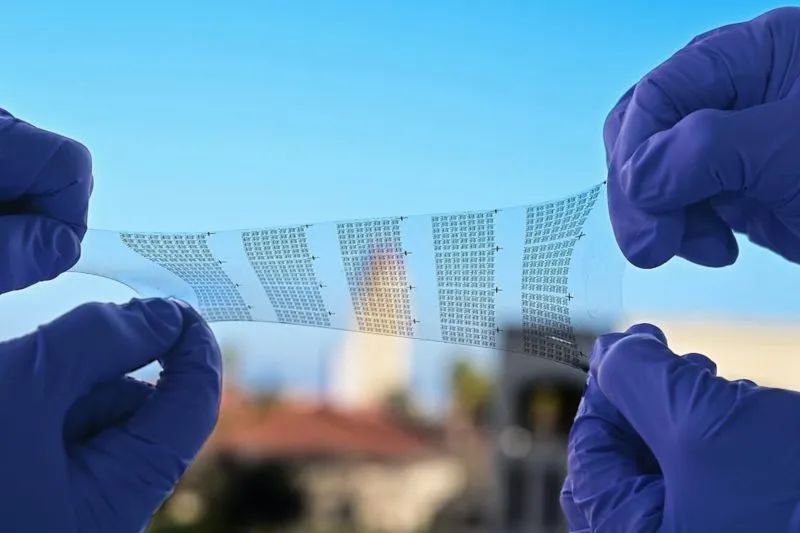
-
Four Micro LED technologies achieve new progress
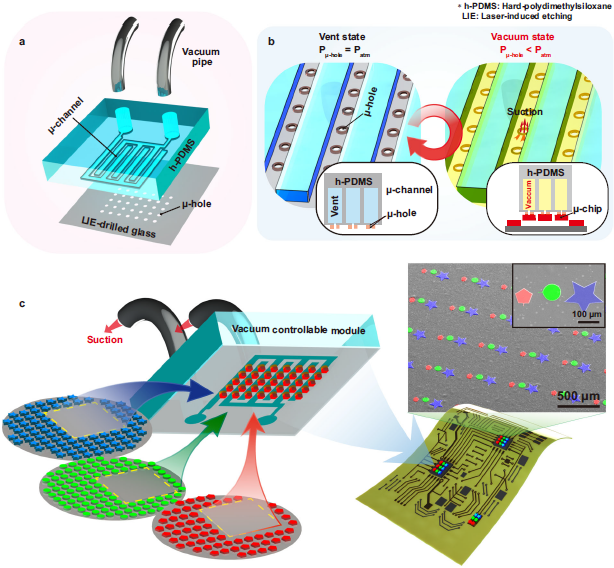
the charts
- The best solution for AR glasses? Integrating Micro LEDs with advanced CMOS
- Red MicroLED R &D competition accelerates: Material innovation can solve the problem of luminous eff
- Micro LED heating capacity reduced by 40%! This study is supported by Samsung
- Zhejiang University's micro-level Micro-LED array achievements were selected into the top ten scient
- Red MicroLED R &D competition accelerates: Material innovation can solve the problem of luminous eff
- Analysis of huge transfer technology: How to break through the Micro LED display process problems?
- technology| Interpretation of MicroLED Technology in Mico Display Principles
- Micro LED achieves breakthrough results again
- Micro 0.4 released globally, opening a new era in the LED industry
- A team from Xiamen University designs artificial nanostructures that enhance deep ultraviolet light
